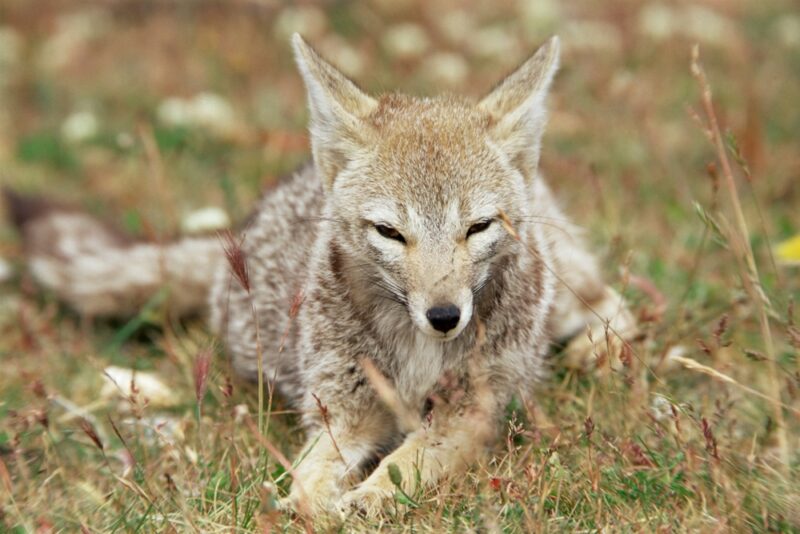A burial ground in Patagonia has revealed that before dogs became our closest four-footed companions, an ancient, now-extinct fox may have held that position instead.
Discovered in 1991, the Cañada Seca site holds the remains of 24 hunter-gatherers. Among the human skeletons were the bones of an unknown canid. At the time, researchers suggested it was a grey fox. A new study reveals that the mystery animal is indeed a fox, but an extinct species — Dusicyon avus. It resembled a jackal and was closely related to the Falkland Islands wolf.
In 1991, the team was puzzled as to why fox bones were buried alongside human remains. They weren’t sure if the animal was placed there intentionally. Genetic and isotopic analysis on the bones has shed some light on the situation.
Lead author Ophelie Lebrasseur told The Independent that several factors suggested the fox was a pet rather than part of the humans’ diet. There were no cut marks on the bones. Radiocarbon dating shows the fox was buried around the same time as the human it was next to. It seems to have been purposefully laid there.

The Patagonian gray fox. Photo: Shutterstock
Ate table scraps?
The last clue that the animal was more of a pet is that the fox’s diet was incredibly similar to the humans of that time and place. It did not resemble the diet of the region’s wild foxes. The ratio of nitrogen and carbon isotopes in the bones showed it ate much more plant-based food.
“[It] suggests it was either fed by the hunter-gatherers or it fed on kitchen refuse,” said Lebrasseur.
Across South America there have been other traces of foxes living in hunter-gatherer communities. Usually, it’s just an odd bone or tooth rather than a near-complete skeleton, as in this case.
“It’s a practice that had been suggested before, but to actually find it is a nice surprise,” Lebrasseur told The New York Times.
Whether the foxes were “pets” as we understand them is still a mystery. “I think the animal was likely tamed, but not something you would consider an actual pet,” said Lebrasseur.
These ancient foxes prowled South America until around 500 years ago. No one is sure why they went extinct. Most assumed that the arrival of domestic dogs led to their downfall. Some even suggested that the foxes interbred with the dogs and created a hybrid species that was more similar to the dog bloodline. This could have created an animal that out-competed the original fox.
The new study proves this is not the case. D. avus and modern dogs are so genetically different that they could not have produced fertile offspring. It seems likely, instead, that a combination of human presence and climate change led to their extinction.






